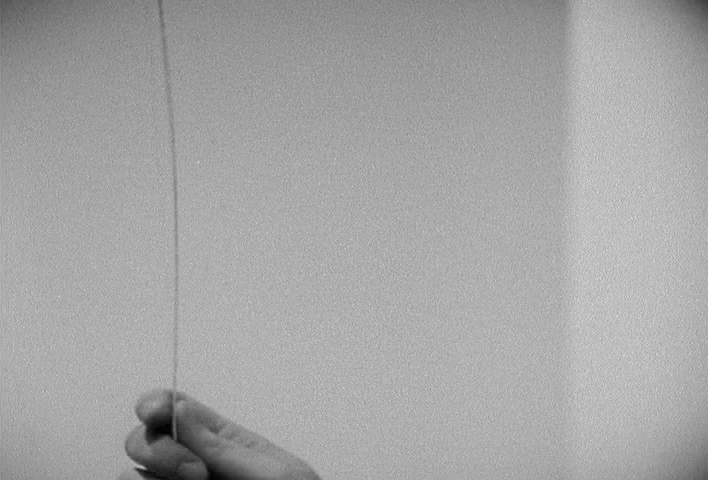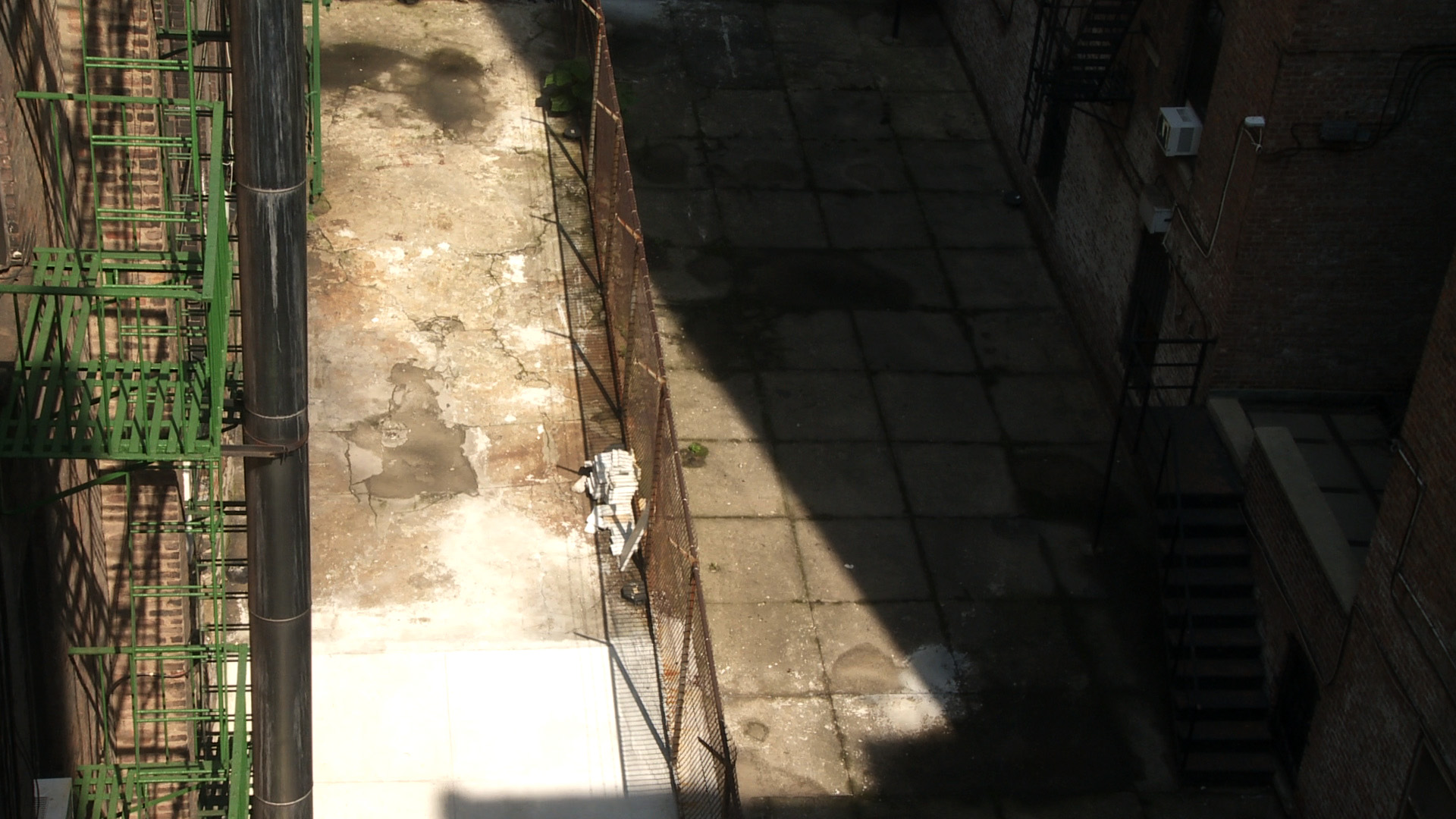
From color studies to lyrical explorations of associative montage, Vincent Grenier’s work inspires the viewer to watch and wait, newly attentive to the quiet surprises of daily life. On the occasion of his program with CATE, Grenier spoke with Ross Jordan spoke about the innovation and sensuous nature of his work.
In my interview with Vincent Grenier we discuss his imaginative experimental videos and his early influences. Grenier’s career is distinguished by a creative sensitivity that makes light, shadow, color, and sound powerful and playful metaphors. His career reflects an artist seeking to challenge himself and his audience to look closely and slowly. Grenier had been fortunate to see the technical possibilities of film change over the course of forty years, through which he has stayed true to the creative risks that give him and his films a vibrate nature.
Ross: How did you come to work in experimental film? Were there any inspirations?
I came slowly to what I’m doing now. In school I saw myself first more as a painter, then a sculptor. I also did theater, photography and some animation and suddenly that seemed to lead to this idea that cinema might be the thing. I think the biggest moment for me was programing films at Canyon Cinema (now San Francisco Cinematheque). For a year after finishing school there (San Francisco Art Institute) I had to organize screenings every week, and at the time there was only one screening a week. The challenge of researching and thinking about what I would screen at this experimental film showcase became a very formative experience for me. But I think works like Wavelength (by Michael Snow, 1967) struck me. I had a difficult viewing of it, when I saw it for the first time, I was still a student at the Art Institute, basically the room emptied. [But] there was something fascinating, it was like permission. This idea that someone could do a film that was so slow. This film had everything in it, there was a plot, someone even dies. But it was really as much about the surface of the image than it was about the space or event it represented. In fact I think it is one of the most eloquent films ever made that highlights and examine the centrality of the flat screen in cinematic representation. It introduced an interesting way of thinking about time as well. I knew that [Michael Snow] was a painter and it is interesting to note that in the art world the surface of the painting and the materiality of the paint has always been a big issue. This idea that it is a canvas, it is a texture. To me it was kind of a revelatory moment about what could be possible in film. Everything was possible.
What interests you about working with film in this way?
I’m very interested in this idea that when you are making a film there are many different sets of meanings at work. How the camera works, and what it can do. There is the context of where I am, the filming context, the editing stage, and then there is the context of the projection. We are looking at a screen, an enlarged image. And that is something that fascinates me. We are in a little room with a projection. It’s just a flat screen, people, and a source of light behind us. It’s a little awkward, when you come right down to it. Throughout the years I have been interested and fascinated by some of these things. Like the screen as a flat space. Cinema is not very good at reproducing three dimensionality. Traditional cinema has to go to great lengths to give us that illusion. Why go there?

Interieur interiors (TO AK) (1978) is a good example of the flatness of cinema that you are talking about. Could you describe that film?
Interieur interiors which is a film I did in the late 70s, describes a space where there is little information. The information is proposed by changes in light modulations textures and quality of edges, and can appear quite abstract. You don’t see anything, but you still project the space. The film gives you some hints, some information that informs you on the scale of things, but they are constantly being played against. After awhile you don’t trust anything. It’s also very much about the rectangle and the suggestions of space, but also the flatness.
Your films appear as flat images like paintings except you’ve added time to the mixture. Could you talk about time and the role it plays in your films?
Reality is largely in our minds and people making films are supposed to produce something having to do with reality. So there is the outside space, there is the space of the screen, and our own space, it takes time to appreciate that. So that is why I like to film things that last a certain amount of time. Small movements can reveal extraordinary things, unsuspecting things.

In Back View (2011) we see shadows moving across an empty courtyard with sounds emanating from the surrounding apartments. The image appears very flat. Then, near the end of the film, you introduce a woman smoking and everything seems to change.
In Back View the appearance of this person smoking out the back of a window is an image that was so different from everything else in that film. It felt like it was appropriate, but maybe not appropriate, and it became an issue. We have heard everyone, all this sound coming from the apartments. And she was, in a strange way, somewhere in between because her arm was outside holding the cigarette. So she is coming out from inside and of course the fragility of her arm, it’s clear that it’s trembling. It’s hard to hold a cigarette for long periods of time with an extended arm. So I felt there was a connection there with the fragility of the space in the courtyard. That was a risk in the sense that I was not sure it was appropriate. But I really like the possibility given to the viewer to revisit the film and interrogate it further.
As you mentioned audiences walked out during your screening of Michael Snow’s Wavelength. It occurs to me that this is risky filmmaking. Can you talk more about risk taking?
I should say first that in the creative stage of initiating a work, for every decision I make, it is not always self evident that it is something that will work. Sometimes you have to reconsider, but it is important to maintain a mind space where anything can be considered. When you edit something there is always the need to really shape something to get further into what you are examining. But also finding other ways to snap out of it and provide opportunities for reframing. It is about allowing opportunities to reach the many less obvious or more hidden areas or meanings that surrounds experiences and if possible, to let them participate in the conversation. I consider that an essential part of my creative work. So risk is by nature what I do.
Ross Jordan is a masters candidate in the dual degree art history and arts administration program at the School of the Art Institute of Chicago. Ross has worked at SAIC’s Sullivan Galleries servicing as a Graduate Curatorial Assistant for 2010’s Touch and Go: Ray Yoshida and his Influences and 2011’s CartoonInk: Emerging Comics in Context. His most recent curatorial project was In/visible (2012) at Co-prosperity Sphere in Chicago.